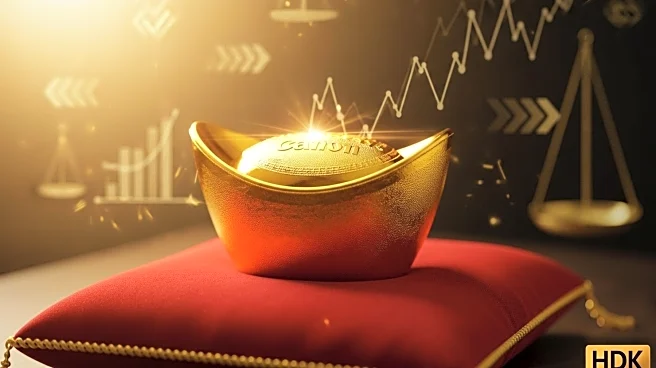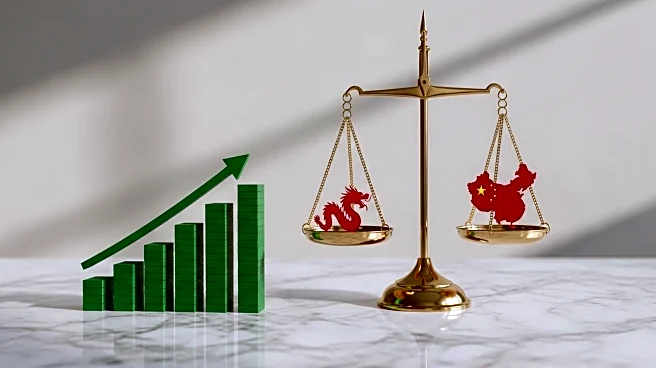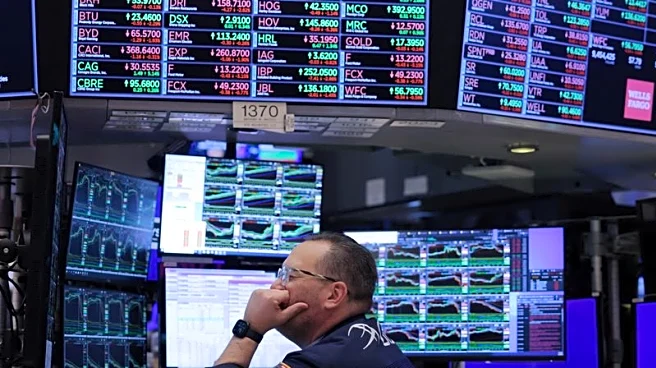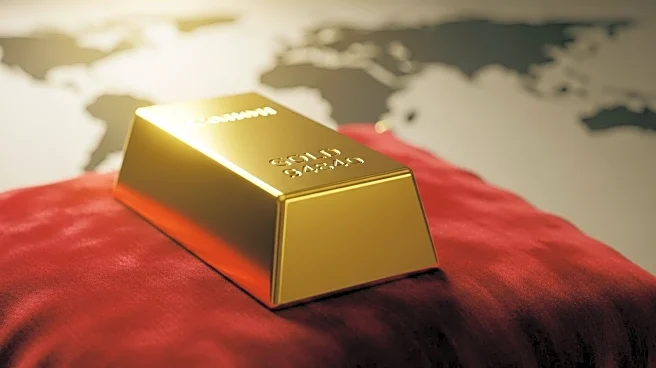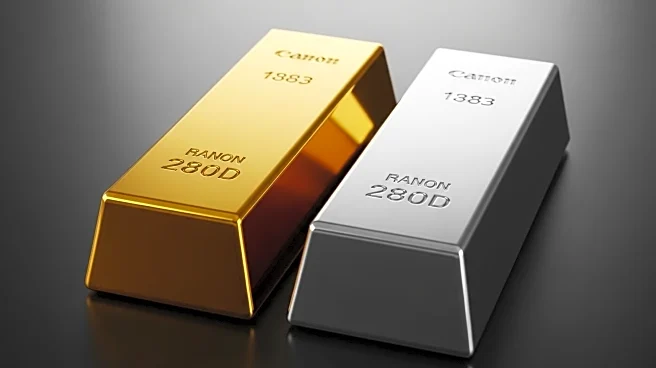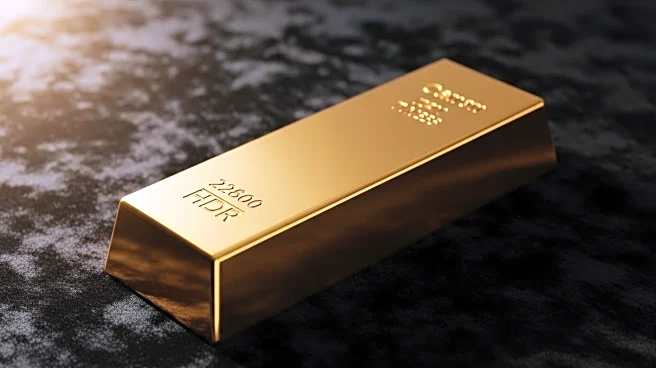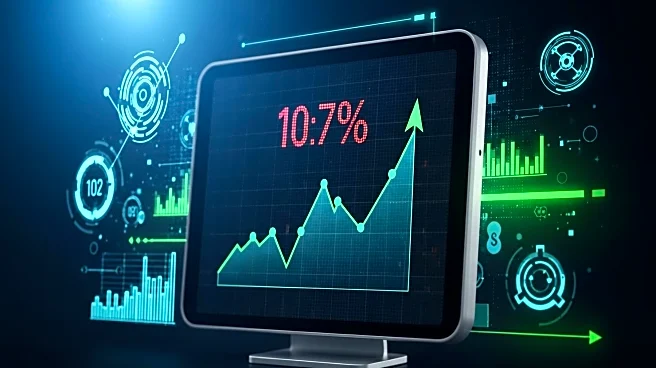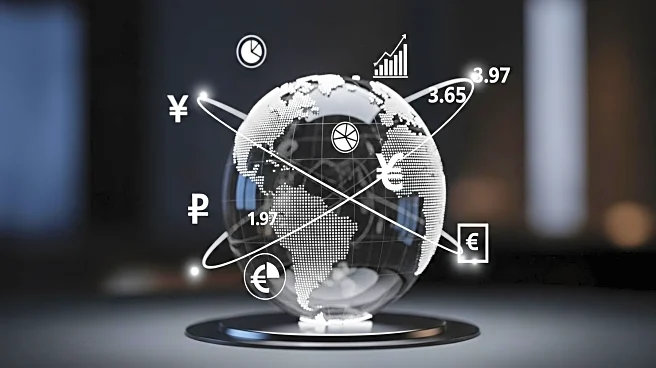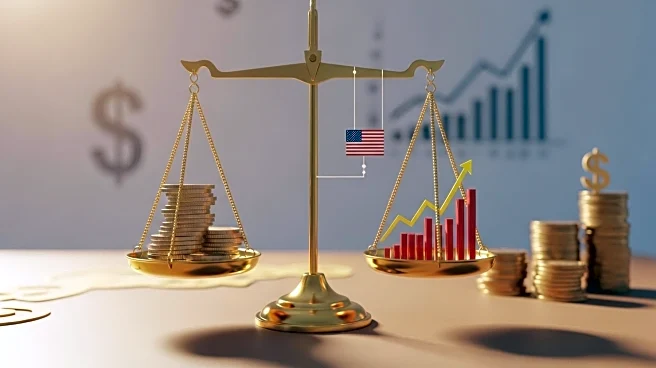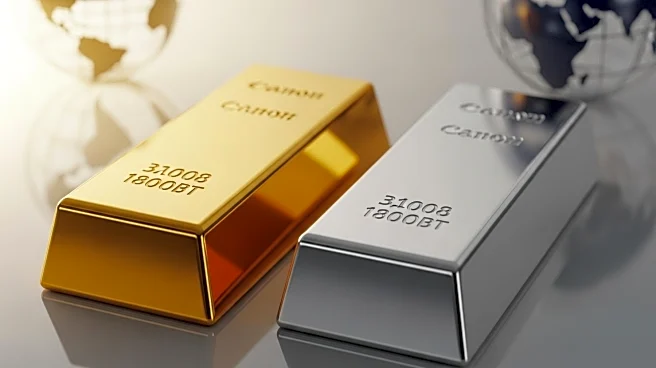What is the story about?
What's Happening?
Gold prices have reached a record high, surpassing $4,100 per ounce, driven by increased safe-haven demand and expectations of further Federal Reserve rate cuts. The surge comes amid renewed trade tensions between the U.S. and China, which have heightened investor anxiety about global economic stability. Spot gold rose by 2% to $4,103.05 per ounce, while gold futures on the COMEX division of the New York Mercantile Exchange increased by nearly 2.9% to $4,124.30. Year-to-date, gold has rallied over 54%, reflecting its strong momentum in the face of geopolitical and economic uncertainties. The anticipation of monetary easing has further supported gold's rise, with markets predicting a 97% probability of a 25-basis-point cut at the Fed's upcoming meeting and a 100% chance of a third cut in December.
Why It's Important?
The surge in gold prices highlights the metal's role as a safe-haven asset during times of economic and political instability. As trade tensions between the U.S. and China escalate, investors are increasingly turning to gold to hedge against potential market volatility. The Federal Reserve's rate-cutting cycle, which began in August, has significantly contributed to gold's gains, as lower interest rates typically enhance the appeal of non-yielding assets like gold. Additionally, central banks are expected to continue expanding their gold reserves, further supporting the bullish outlook for the metal. This trend underscores the shifting dynamics in global financial markets, where gold is increasingly seen as a reliable store of value amid declining real interest rates and geopolitical risks.
What's Next?
Major financial institutions have upgraded their gold price forecasts, with projections suggesting that gold could reach $5,000 per ounce by 2026. The ongoing central bank purchases and the Federal Reserve's dovish stance are likely to sustain the upward momentum in gold prices. Analysts anticipate that while short-term corrections may occur, the long-term outlook for gold remains strong, driven by its appeal as a hedge against inflation and currency devaluation. As geopolitical tensions and economic uncertainties persist, gold's role in investment portfolios is expected to grow, providing stability in an increasingly volatile market environment.
Beyond the Headlines
The current rally in gold prices reflects broader shifts in global economic strategies, particularly among emerging market central banks diversifying away from U.S. dollar assets. This trend may signal a long-term rebalancing of global financial reserves, with gold playing a central role. The increased allocation to gold by retail investors and financial institutions further emphasizes its importance as a strategic asset in times of economic uncertainty. As the U.S. dollar's dominance faces scrutiny, gold's status as a universal store of value may become more pronounced, influencing future monetary policies and investment strategies worldwide.
AI Generated Content
Do you find this article useful?
